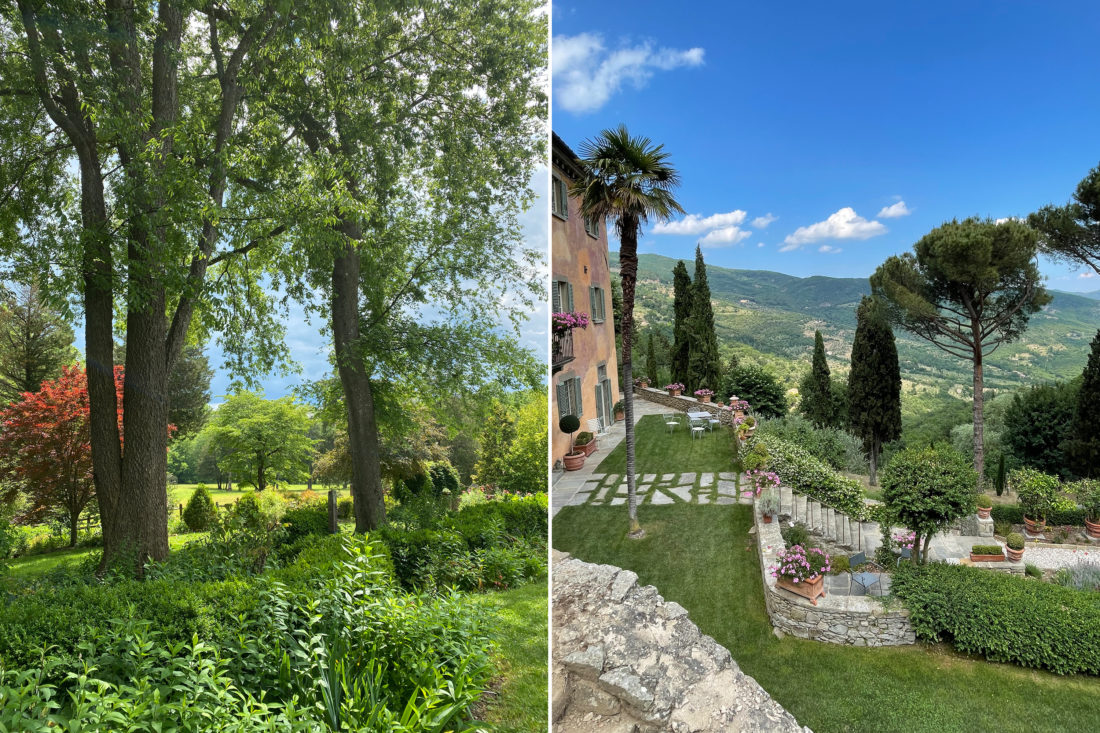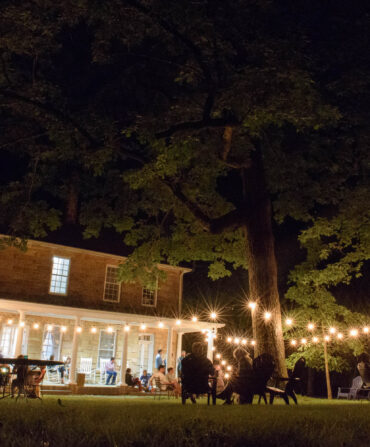The writer Frances Mayes has always invited readers inside, to her life-changing home in Italy in her best-selling memoir Under the Tuscan Sun; and later to her 1800s farmhouse in Hillsborough, North Carolina, where the scent of a magnolia perfumed her bedroom.
In her personal, warm, and lovely new book, A Place in the World, Mayes shares stories of her Italian home, Bramasole (yes, she still lives part of the year in that famous estate), and the Hillsborough farm called Chatwood that she decided to sell during the pandemic. She also reveals her new North Carolina digs, mines her own memories of her childhood home in Georgia, and peeks inside friends’ homes she’s visited throughout her fascinating life.
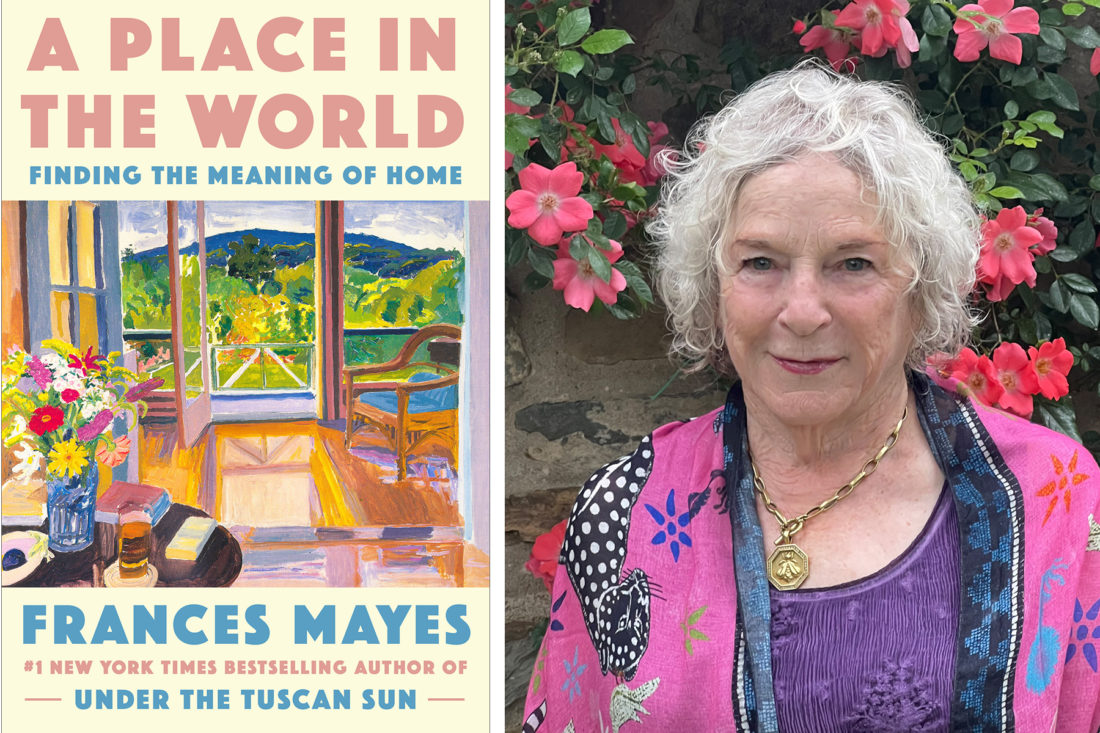
A Place in the World is a charming read, with surprise recipes both Italian and Southern. Fellow Mayes fans will delight in her musings on flowers, accents, and housekeeping. (The book feels like a warm conversation with your most thoughtful, curious friend.) Here, the author divulges more about the book, her favorite places in little Hillsborough, her beloved heirloom roses, and how she feels about polenta versus grits.
You use a beautiful phrase early on in the new book: “the Southern instinct for place.” What is that instinct, and how does it manifest among Southerners?
Have you ever noticed how Southerners meeting by chance in Istanbul, Perth, wherever in the world, instantly connect? Before long, the degrees of separation are breached, and you know who went to Vanderbilt and who owned the car dealership in Hawkinsville and whose mama delivered all the babies in Tuscaloosa. Because we have a shared attachment to the complicated, intense, and gorgeous swath of Earth that is the South, we recognize an accent coming from the next table, and we bond. In college, we literature students, steeped in the great Southern writers, were told the bond came from the South being the only American place to have fought and lost a war on its own soil. I never swallowed that lore. I always felt wedded to the drastic power of the place itself. There is a long section in my book about that—about heat mirages, sinkholes, tornados, rivers, swamps, hurricanes, crocodiles, lost valleys where there is still a twinge of old English, front porch music, storytelling (some quite boring), on and on. We share the beauty of the land, the sadness of racial strife, good manners, the glory and idiocy of die-hard individuality, an age-old hospitality, weird weddings and funerals, and thousands of other things.
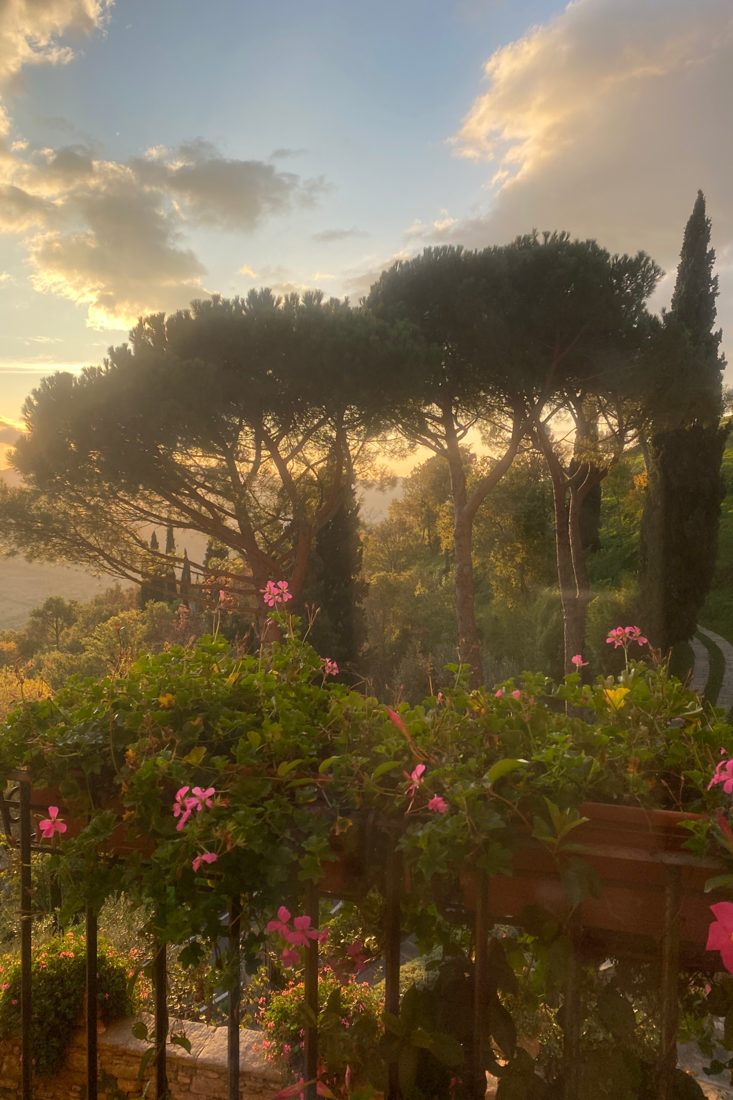
What are some of your own favorite books about home and place?
There are thousands of inspiring home design books, but few about the meaning of home. I loved Cross Creek by Marjorie Kinnan Rawlings, who wrote The Yearling. Her cracker house in North Florida had a presence. I made a pilgrimage to see it. I also went to see Eudora Welty’s home in Jackson. One Writer’s Beginnings led me there. Recently, I enjoyed Lives of Houses, edited by Kate Kennedy and Hermione Lee.

When you’re writing about a place, how do you decide what descriptions to include? Are you writing for your own satisfaction, or thinking of a reader, or something else?
An ancient Chinese poet said to create an image is to live twice. That always has inspired me. To recreate in words an experience, a place, a taste, a person is quite an aspiration. Writing comes from so many sources—pleasure, betrayal, excitement, tragedy, astonishment—and the joy is that I have had the experience, and then to write about it gives it back to me again. When describing, I try to include several sensory elements so that a reader responds with mind and body. For example, entering a room: The visual impact is extended by the scent of old flower water in a vase, the slush and fall of low tide outside the window, a ginger cat stretching, the lift of linen curtains—that kind of immediacy, which causes participation from the reader, while creating a setting for action. I write because I love that surge of engagement when trying to find the right words. I often think of my husband, my daughter, and a few friends while I am writing. Will they roll their eyes, will they be pleased?

What are some resources you suggest people look into for learning about their own homes or neighborhoods? Have you learned anything new since writing this book you want to share?
My old farm, Chatwood, came to me with a sheaf of information previous owners passed on to each next buyer. When we sold the place, I carefully organized everything and handed it on, including a piece of beam carved with Roman numerals from the original 1806 construction. One was removed in a renovation and deserved to be kept. I found a trove of publications in a special case in the Hillsborough library, even brochures on gardens written by the owner of Chatwood who established its gardens. What is saved is precious. What is amazing is how old houses continue to reveal their secrets.
Since writing A Place in the World, I have been stunned to find several decoratively painted walls in Bramasole. The plaster had to be replaced, and behind it here was this amazing fresco covered for probably a couple of hundred years. In three other rooms, we found painted brocade walls, a nineteenth-century stencil, and a room painted in stripes.
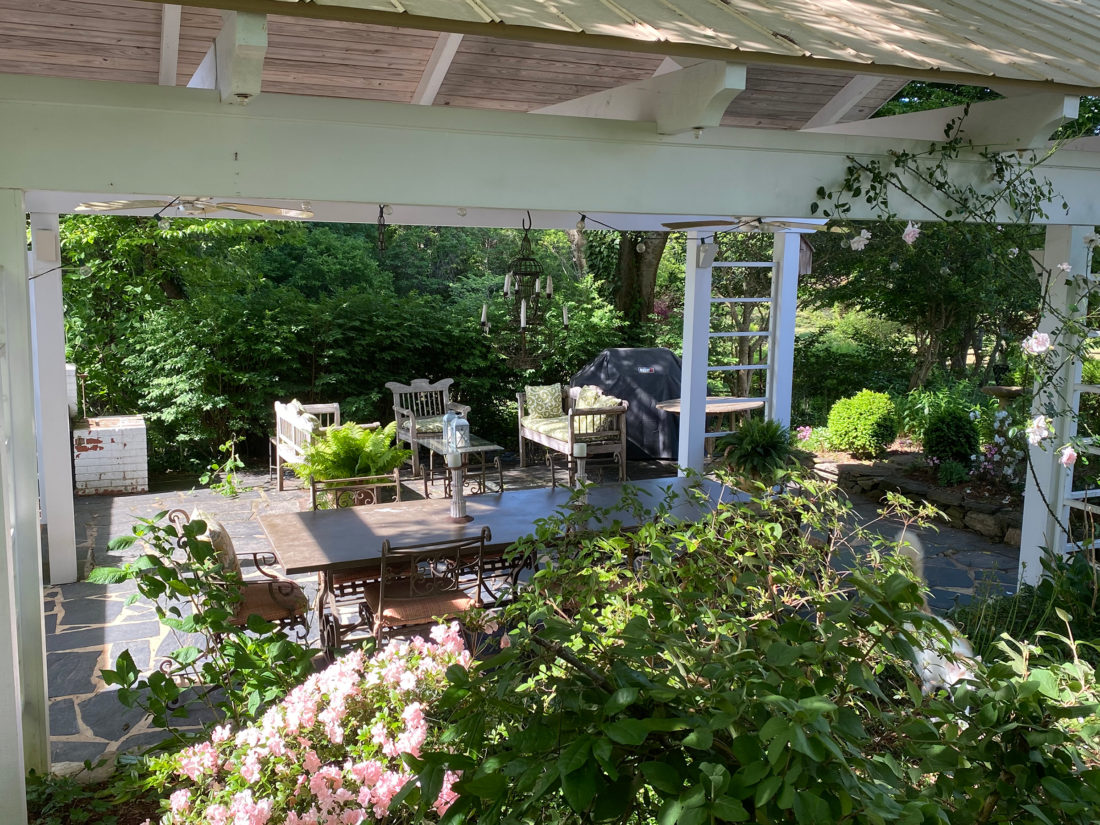
How do you make a temporary place—a rental or even a hotel room—feel like home?
I try not to rearrange furniture! To a nearby beach rental, I will haul table linens, candles, good knives, a big skillet, books, some colorful throws in case there is an ugly fake-leather sofa. Hotels have become so curated and comfortable that I am happy to just check in and set up my iPad and notebooks.
If someone is just passing through Hillsborough for a day, what must they see or do?
Just walk. You step behind the time curtain a bit and meander the shady streets lined with eighteenth- and nineteenth-century houses, charmed gardens, a peaceful downtown dominated by a stately courthouse, crape myrtle trees, churches with graveyards full of dire epitaphs. Look twice and you discover a lot of quirky porches and gardens of the later houses. It’s a town full of creative people, a nucleus of writers, painters, architects, photographers, scholars, musicians—a concentration writer Michael Malone says is unrivaled in America since Concord, Massachusetts, in the nineteenth century. The tiny bookstore Purple Crow stocks works by all the local writers such as Lee Smith, Jill McCorkle, and Allan Gurganus. The venerable Colonial Inn was recently restored, so there is a fine place to sit on the porch, have a cocktail, and listen to someone singing “I’ll Fly Away.”
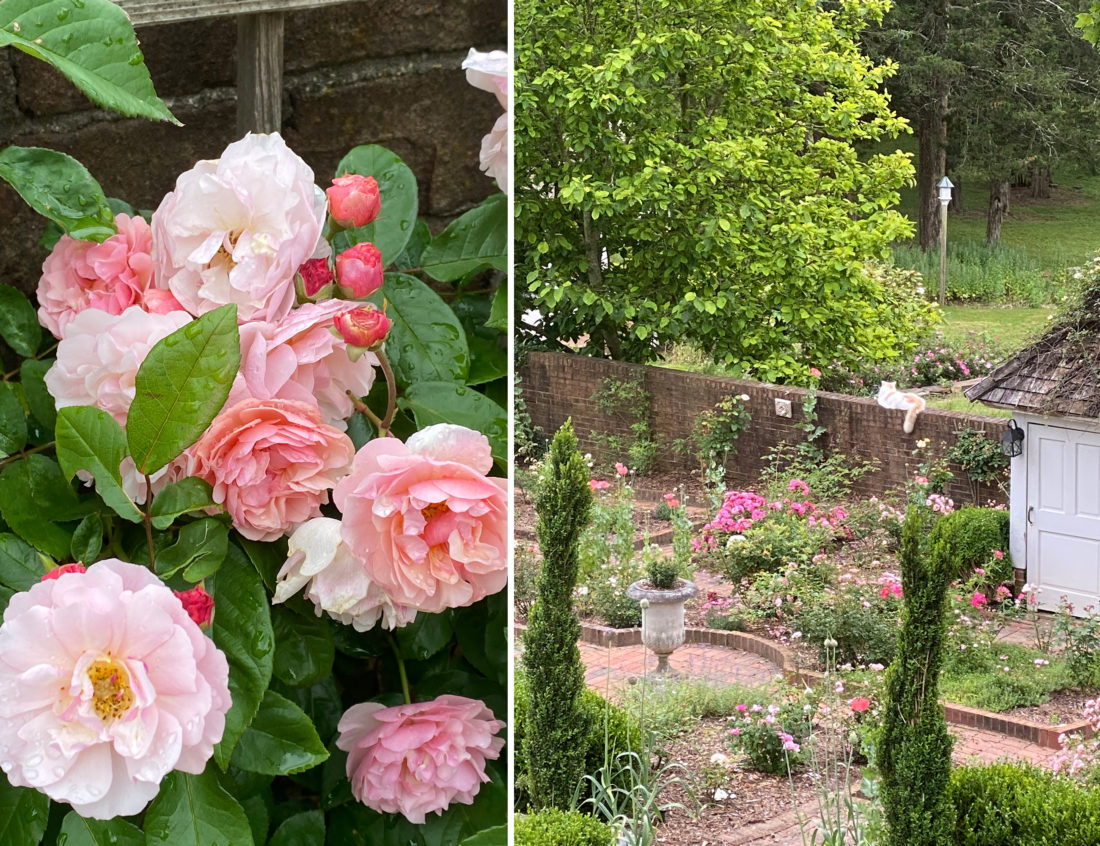
What are some rose varieties that you encourage Southern friends to plant? I love poking around on Antique Rose Emporium and am curious if you see any on there you’ve tended or love?
Oh, I know that emporium! There are several sites that are great for finding Ispahan, Paul Neyron, and others not sold in local nurseries. I have fantastic luck with good old Queen Elizabeth, who will climb if you let her, and with Sally Holmes. I call her the cheerleader. The pink-tinged buds open to white blooms that occur in bunches, like ready-made bridal bouquets. I love the ramblers/climbers Albertine, Albéric Barbier, Colette, Sombreuil, and Pierre de Ronsard, aka Eden. For shrubs, some favorites are Julia Child, butter yellow, Rosa Mundi, and Gloire di Dijon, both with literary associations, and several of the David Austin roses, such as Gertrude Jekyll, peachy Juliet, and the ever-likeable Graham Thomas and Abraham Darby.
What’s your garden like now?
Paradiso! At Bramasole, in southern Tuscany, my front garden combines traditional formal elements such as a boxwood topiary lane and a row of large potted lemon trees with a blowsy tangle of lavender, gaura (pink and white), eremophila nivea, and salvia. Butterflies literally flock over them so they are part of the loveliness. There’s a rose and herb terrace, and the terrace above that is close-planted Mexican daisies, sage, more lavender, santolina, agave, artichokes, rosemary. In shady parts, masses of hydrangeas that manage to ignore treatments and turn lurid shades of fuchsia and purple, though the lace-caps and Annas behave better. Beyond the gardens, our land—all olive trees—is profligate with wildflowers. Poppies, wild orange lilies, irises, daffodils, crocuses, alium, wild asters, and geraniums, and various white umbels, all of which we call Queen Anne’s lace, though they probably aren’t. And ginestra, Scotch broom, that smells like hair oil but cheerfully blazes yellow across the hills.
Now that we have left our farmhouse in North Carolina, our new garden there is low maintenance. Some dazzling camellias are tolerated by a voracious deer population. I have my eye on changes but right now, one complicated garden is basta, enough!
Do you have a guestbook or any other tradition when people come over?
In Italy, when guests come into the kitchen for breakfast, I always ask them what they dreamed. Somehow, this house unleashes astounding dreams. We have never kept a guestbook, and I wish we had. Its seams would be bursting by now.
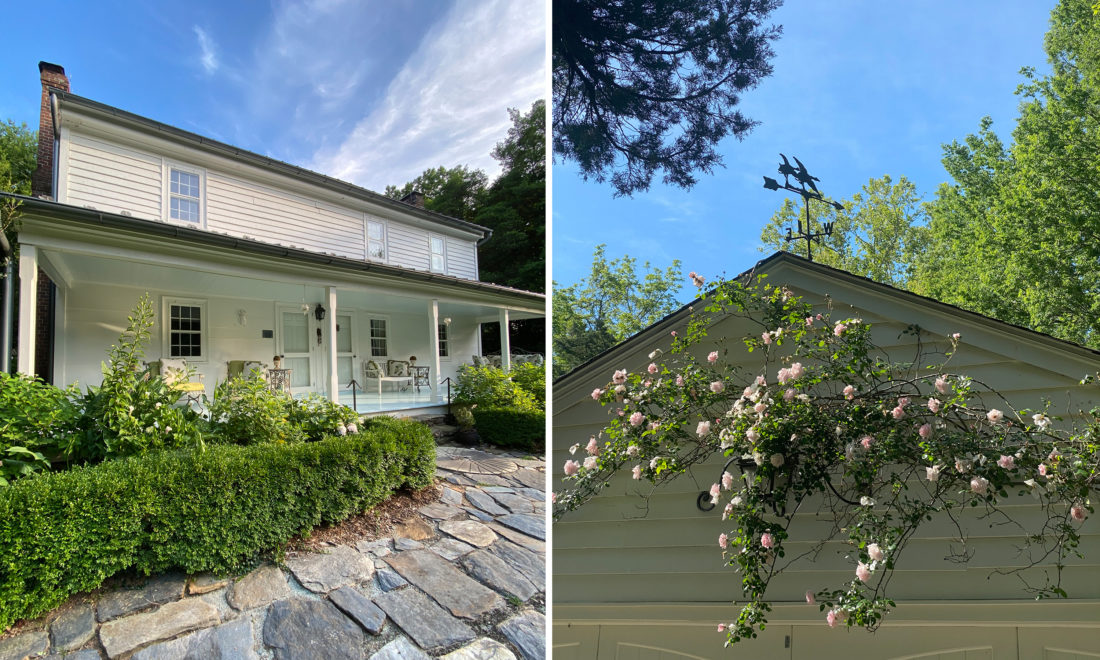
I love that you share some of your mom’s recipes, including cheese grits.
As a child, I would not eat grits. I didn’t like the word or the runny white look. Also, chickens were fed something called “grit.” Only after living in Italy, where I love golden polenta (not exactly the same thing), did I learn to appreciate my mother’s cheese grits and the great Frank Stitt recipe for shrimp and grits.
When you’re in Italy, what do you most miss about your North Carolina home? And when you’re in North Carolina, what do you most miss about your Tuscan home?
In Italy, I miss friends from home. When I’m in North Carolina, I miss friends from my other home. Otherwise, I truly love what is special about each.
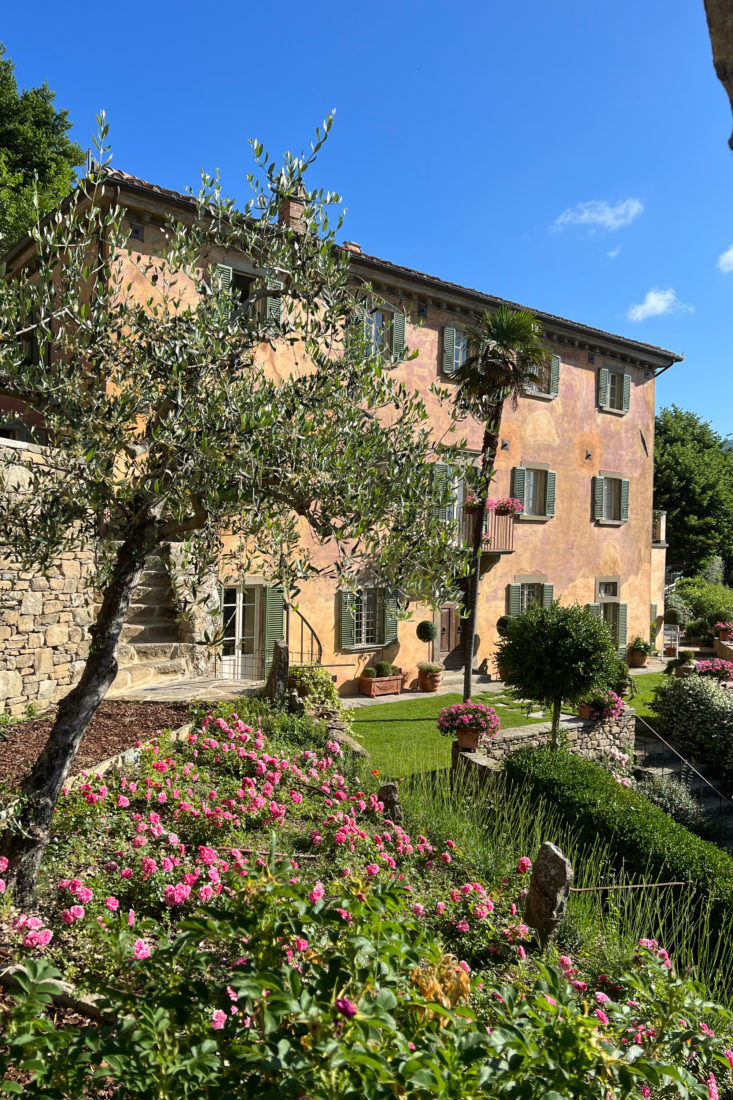
Rapid fire:
Grits or polenta? Polenta
Biscuits or pancakes? Biscuits
Magnolia or gardenia? Gardenia
Favorite season in North Carolina? Spring
Favorite season in Italy? Fall. No, Spring. Winter is lovely. Summer is best.
Favorite view: The duomo in Florence, from all angles.
Favorite porch: Many friends in Hillsborough have great ones. When we gather there, we’re home.
Favorite book/article you’ve read lately: This Is Happiness by Niall Williams
Favorite thing you’ve watched lately: Rewatched “A Room with a View”


